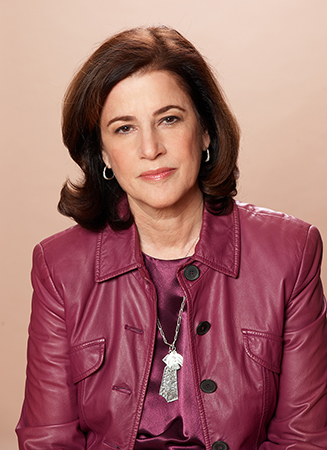Contributor: Morgan Motzel
Work and Life is a two-hour radio program hosted by Stew Friedman, director of the Wharton Work/Life Integration Project, on Sirius XM’s Channel 111, Business Radio Powered by Wharton. Every Tuesday from 7 pm to 9 pm EST, Stew speaks with everyday people and the world’s leading experts about creating harmony among work, home, community, and the private self (mind, body, and spirit).
Stew Friedman spoke with Ellen Galinsky, President and Co-Founder of the Families and Work Institute, an organization that conducts research on workplace effectiveness. Galinksy offered practical advice for businesses to create shared value for employers and employees and improve the well-being of working American families.
The following are edited excerpts of Friedman’s conversation with Galinsky:
Stew Friedman: What do you see as you go around the country talking to employers and families and communities about what is making life better for working families in this country?
Ellen Galinsky:  I think that social policy can be a part of the equation, but I also think that social policy is not enough. I think it takes business action to bring about change, especially in the United States. For the past decade at the Families and Work Institute, we have been working on ways to create more effective work places.
I think that social policy can be a part of the equation, but I also think that social policy is not enough. I think it takes business action to bring about change, especially in the United States. For the past decade at the Families and Work Institute, we have been working on ways to create more effective work places.
The Families and Work Institute does an ongoing study of the changing workforce in America. We have about 600 unique data points so we can look at peoples’ lives in any way we want. This is truly exciting because whatever new issues come up in the news, we can pretty quickly develop an opinion based on research.
One of the things we continue to wonder a lot about is the question of “Are there win-wins? Are there things that would be good for employees that would be good for employers too?” If there are, we could then take things that we know are good for employees, for example being in better health – although that’s good for employers too because healthcare costs are expensive – being in less conflict, less stressed, better able to sleep at night, less depression, and then translating that to the related good for employers, including people who are better engaged at work, people who want to stay with their company, and people who are more satisfied with their jobs.
We could take a whole series of outcomes that were personal-, family-, and job-oriented and put them in to this research mix and determine what about the workplace predicts these outcomes that are mutually beneficial for both the employer and the employee. We’ve been researching this since about 1997, but we’ve actually found that the list keeps changing. For example, economic security was not as important when the economy was booming, but when we went into the recession, economic security suddenly became the major predictor of all outcomes. If you were worried about losing your job, or didn’t feel that you were fairly compensated, or you didn’t feel that you had adequate benefits, the things that we might otherwise predict to be positive were negative.
So while the factors can fluctuate, the most important considerations are pretty solidified. Things like having an opportunity to be challenged by your job and to learn, for example, that turns out to be critically important for both your well-being in your personal life and your well-being at work. Having some say over how to do your job – not being an automaton, not being told what to do all the time, but having some discretion and some chance to be yourself and to be creative with your job – that turns out to be predictive as well. Having a supervisor that helps you succeed on the job, that turns out to be very important. A culture of respect and trust that is genuinely felt by employees is also key – not just something that the employer says and puts in a logo on a mission statement somewhere, but something that it’s really experienced by the employees. Finally, having work-life integration, as you talk about Stew, is also important.
So in summary, we’ve found six predictors that are consistently important. We then took those predictors and developed a project in which we could share our research and work with communities around the country by giving a reward for employers – small, mid-size, and large – that exemplify these six characteristics. From there, we developed a set of guidelines which outline best practices for creating an effective workplace.
SF: Tell us about the key points in that set of guidelines.
EG: This is a guide that we at the Families and Work Institute do in our partnership with the Society for Human Resource Management (SHRM). We started our project called “When Work Works” in 2005 with funding from the Sloan Foundation, and in 2011 we partnered with SHRM and have since been taking When Work Works nationwide. More employers are trying to actively manage employee workload, and there is a list of strategies which summarize what they’re doing to keep people from being so overworked.
Some companies are providing additional staffing for times when work is heaviest, for example, companies like CPAs where the busy seasons are predictable leading up to Tax Day. Other organizations are implementing employee cross-training so people can cover for each other when they need to take time off.
SF: And that also enriches the job too. The more skills you have or are developing, the more competent and confident you are in being able to do all sorts of things
EG: Right. To give one example, there’s a company called Menlo Innovations where all of their organization’s work is team-based. Because of that, people can almost always take vacations, and they can always go home at the end of the day. They have a very different staffing model, and it’s been quite successful for them.
SF: Interesting. So staffing, cross-training, a team-approach, what else?
EG: Improving work design: look at what’s working and what’s not working about the way we’re working. For example, is everything last minute in a crisis? Could we prevent that? How can we do that? Having teams of people get together to talk about how they can improve the way they work to make it more effective. Another solution that we saw in this year’s guide was to provide uninterrupted time during the work day. There’s a software and business services firm in Santa Barbara, and they have email and chat functions that go silent for all employees 3 hours each day to provide uninterrupted time for “passion projects”, as what they call it.
SF: Three hours of uninterrupted time, daily?
EG: That’s what the employees say. In the 90s, Xerox did an experimental project with which we were affiliated where they created uninterrupted time and found that the results were really incredible. They had products getting to market on time when people were not being interrupted constantly throughout the day. Actually, we found that in our studies on workload that employees who are interrupted all of the time are the most likely to report feeling overworked.
SF: I would assume that’s another factor, like economic security, that has grown increasingly important in recent years. I’m sure that this need for uninterrupted time is becoming increasingly relevant in the digital age.
EG: Yes, absolutely.
Galinksy reports on the research of the Families and Work Institute and discusses actionable strategies employers can take in order to increase the effectiveness their workforce. Many well-intentioned organizations, however, will never see the implementation of these work design tactics because they face strong inertia or active resistance to company change. What challenges do you foresee in your organization? Can you create uninterrupted time or a team-based approach to work, for example? Join us in the comments below with your thoughts and experiences.
To learn more about Galinsky’ work, visit her organization’s website at http://www.familiesandwork.org/.
Join Work and Life on May 13 at 7 PM on Sirius XM Channel 111 for conversations with Neil Blumenthal about the impact of Warby Parker’s social mission on the lives of its employees and with Nilofer Merchant about your “onlyness” as a source of inspiration. Visit Work and Life for a full schedule of future guests.
About the Author:
Morgan Motzel  is an undergraduate junior in the Huntsman Program in International Studies and Business at Penn focusing on Management and Latin America.
is an undergraduate junior in the Huntsman Program in International Studies and Business at Penn focusing on Management and Latin America.
Leave a Reply